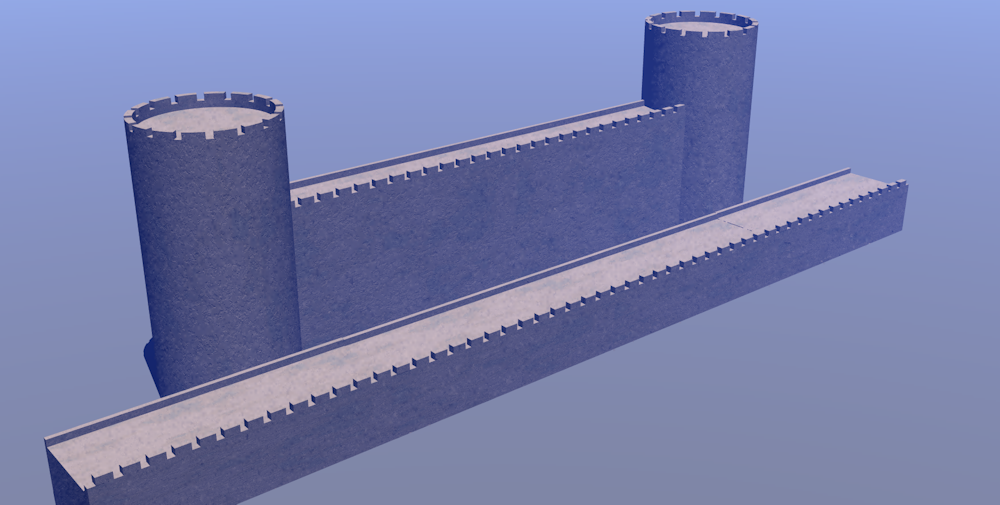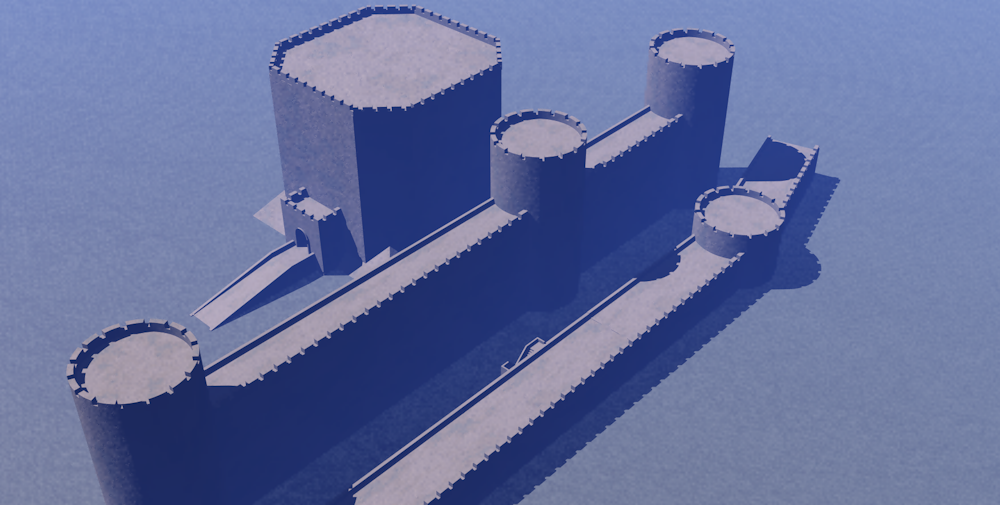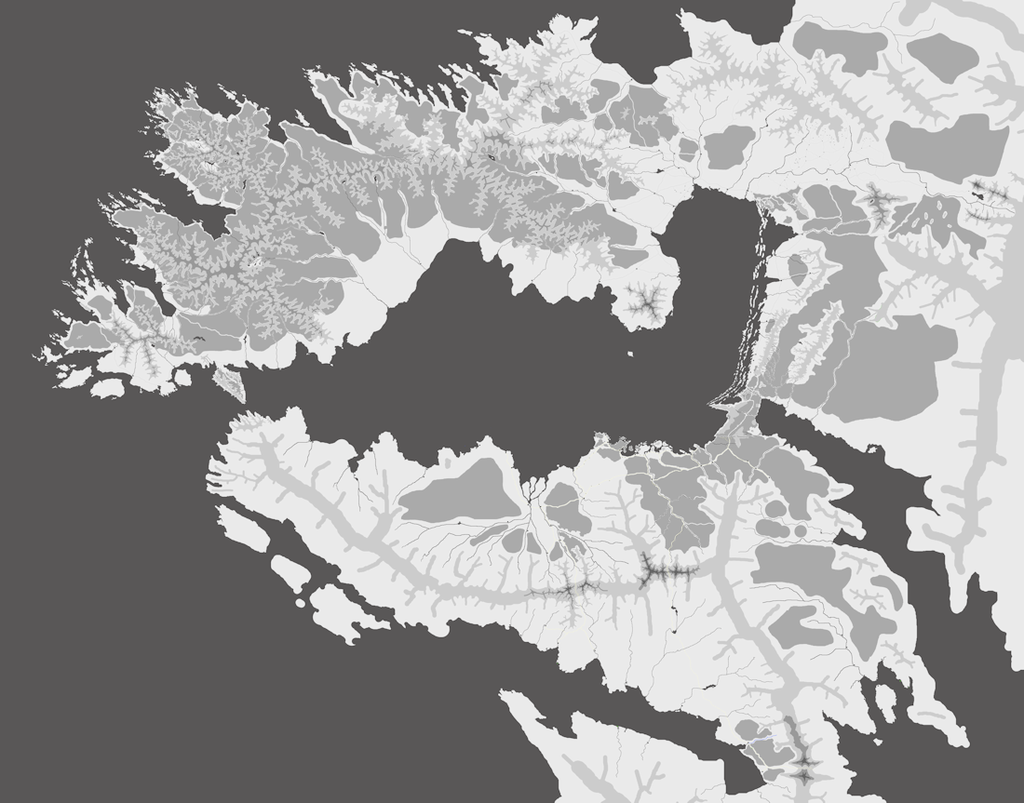I put a summary of background material regarding the Empire on the Facebook page but to make life easier for people, here it is (slightly tweaked):
Instrument of the Empire is set entirely within the bounds of the eponymous Empire, though some references are made to neighbouring lands. This is a brief explanation of how the Empire was formed, how it is governed, and gives a little ‘historical’ insight.
Our tale takes place in the early spring of the seven hundredth anniversary of the founding of what became the Empire. This founding occurred at the end of the First Demon War. The Empire was created from an alliance between the scattered survivors of the native peoples in the western lands of the continent, and the refugees from many eastern and southern lands who fled there to escape from the appalling death and destruction the demons brought to Adenor.
The greatest number of refugees had travelled together for many months, valuing the protection of strength in numbers, and learning more about one another along the way as they shared the constant hardships, the little triumphs, and the many tragedies. A guardian was sent to guide them, a being of power who could speak all of their tongues. The angels were glimpsed occasionally, though one seemed to spend more time watching over them than any other. When demons and their allies sought to attack the people, the angel and the guardian organised their defence, redirected their line of advance, and the angel intervened personally on more than one occasion. The angels and demons wielded powers the people did not understand, but her actions saved them on more than one occasion. While she defended the refugees, her companions scoured Adenor, seeking the demons and destroying them.
Once the demons had been eradicated, some of the Angels met with the refugees in the broad valley under the towering peak known as the Red Spire. The Angel, the female who seemed to be in charge told them, ‘We are not gods’, and guidance was offered for the future of the survivors. Some of the hill tribes came to witness the event and were welcomed. It was the first tentative step toward what would emerge over time.
Almost ninety percent of the western population had died in plagues caused by the demons. Huge swathes of land were unpopulated. But the newcomers found out early on that there were some unpleasant neighbours to the south and far west.
The Old Kingdom lay to the south. It had been relatively untouched by the war or the diseases that had devastated most of the world. The rulers learned that the war was over, and decided to resume preying upon the empty lands to the north. Their slavers and plunderers came north via the Gateway, known in Omari’s time as the Narrowlands. This is the area in the bottom right corner of the main map, with the port of Kyremeila marked on it. The Angels left the people of Adenor to their own destiny as they had other battles to fight in a war that had raged for millennia. The survivors and natives of the northern lands cooperated in defending against the Old Kingdom’s aggression. Much of the population shifted into the areas close to the site of the current Capital. River crossings were fortified and a watch was maintained on the coast. Agriculture and industry was established away from known locations in an effort to mask the growing population.
The current site for the Capital began in what is now called the Water Meadows. The largest of three villages stood on that site which was dominated by the tall hill to the north, topped by a shrine to the same Goddess worshipped by the Confrator. Some of the natives still occupied one of the villages but welcomed the newcomers. The Jennarians who had become the de facto leaders of the former refugees refused sovereign status. They were neutral toward the many factions within the growing population and put into law many of the recommendations the Angels had given them. Slavery was outlawed permanently. Basic education and the right to freedom of worship, expression and protection under the law was granted to all, regardless of race, gender, religion or any clan or cultural affiliations. The Old Kingdom continued to prey upon the north for almost two hundred years, destroying the Capital twice in that time only for it to be rebuilt bigger and better each time.
Expansion brought some minor friction with the growing populations of natives in more remote areas but when the early Empire made it clear that they had no territorial ambitions, and were open to trade and cooperation, it won them more allies.
Five hundred years before Omari’s tale, the Sealords attacked the North Coast and entered the Inner Sea in large numbers. They fought the Old Kingdom on land and on the water, resulting in a stalemate on the southern flank. In the lands between Spear Point, the Capital and the North Coast, Sealord raiders and slavers attacked scores of farms and settlements. But the North Coast was home to clans of tall people, used to fighting among themselves, and equipped with a ferocious longbow that matched their stature. The Sealord forces withered under the arrows. But the terrible war left the North with no harvest, few livestock and no ships. Help came from an unexpected quarter.
Scouts brought word to the clan chiefs of columns of wagons and pack animals approaching warily from the east, led by a woman wearing armour but carrying no weapons. The newcomers made no secret of their advance, though troops guarded the columns day and night. The clans met them on the slopes of a mountain pass and an armed delegation went to meet the strangers. They were surprised when the woman and one cleric came forward. The cleric knew enough of the north-western tongue to make himself understood. The spokesman for the clans told the strangers that they had seen off invaders already. The woman said she had not come to fight or plunder, but to offer help. The wagons contained surplus food, clothing, blankets, cooking utensils and other simple necessities. The warriors and their chiefs were startled and asked what she wanted in exchange. Her answer came as a shock: she told them her desire was for friendship between their peoples, and a husband. The future Empress confounded their expectations, and her boldness won them over. Within another fifty years, all of the north had joined the Empire.
The Sealords were forced from the Inner Sea and all their outposts on the mainland and littoral islands were taken in a long military campaign on land and at sea. Spear Point was made into a huge fortified port as it controlled all access via the straits. The prolonged focus on the west had given the Old Kingdom the impression that the southern flank of the Empire was unguarded and another attempt was made to defeat the growing power of the Empire. It very nearly succeeded.
The Kingdom threw fleets of ships at Gorna and the ports and cities of the eastern Inner Sea. Small armies were landed from each of the fleets, but the main force of over one hundred thousand troops marched from the Gateway, sweeping all resistance before it and sacking cities and settlements on the way. The Capital was their goal. It took the southerners three months to reach it, and a brutal siege commenced. Relief came from the west and the north as Imperial armies converged on their enemy’s main force. The southerners experienced the full fury of the Northern archers for the first time. The arrow storms felled lords and their vassals by the thousand. The southerners capitulated when their Crown Prince fell.
The Emperor realised that the Gateway had to be controlled to prevent a recurrence of the land invasion, and the Imperial Fleet was divided into areas of responsibility so that the Inner Sea was dominated and all access to it was controlled by the Empire. The Gateway was annexed after a short campaign against the Old Kingdom. It was fortified and guarded, but the Empire made it clear that they had no territorial ambitions within the Kingdom itself.
The Second Demon War began shortly after the Empire had consolidated its hold on the Gateway, now renamed the Narrowlands. It was a lesser affair than the first event, and the Angels left Adenor again once the small force of demons had been destroyed. What they said at the Red Spire has remained a secret only a few in the Jennarian clan know. The demons’ destruction of the port city of Karsendia and the loss of the Gateway to the Empire triggered a series of civil wars in the Old Kingdom. It fractured into the Principalities and City States. The old seat of power at Sheylon remained the most powerful of the Principalities, and the Princes of that line maintain their right to kingship over all the territories that once were controlled by their ancestors. Sheylon has remained the most aggressive and ambitious of the Empire’s southern neighbours. The conflicts between the six Principalities and fifty city states have mitigated the threat they posed to the Empire for a long time.
Eighty years before Omari’s tale, an alliance led by the Prince of Sheylon attempted to retake the Gateway. That military gamble failed utterly, losing tens of thousands in battle on land and at sea, and thousands more perished in the eastern marshes as the uneducated soldiery fled without maps or any idea of where they were going.
The last war the Empire fought was the short campaign to defend Spear Point from a bold Sealord attempt to seize control of the access to the Inner Sea. Admiral Hejada’s forces defeated the westerners at sea and on land. The current Emperor Carlis fought Sealord raiders to reach Spear Point. After such a heavy defeat, Queen Cherada’s eyes turned to other targets, and the Sealords invaded some of the southern City States. Those wars have continued for over twenty five years, and are currently stalemated.
The Capital is known only by that name as the Emperors and Empresses overruled the Imperial Council. They refused to have the city named after any of them or their clan, and they refused to accept any name that would imply favouring any of the many races, religions and clans within the Empire. It was rebuilt in a grid pattern to allow faster movement of troops in time of conflict. Those same, broad, paved main thoroughfares were conducive to commerce, better hygiene and health.
This is a very brief summary of Imperial history. More will be revealed over time in the books and the supporting material.
Feel free to comment and ask questions folks. Thanks for reading

 Top
Top Top
Top Top
Top Top
Top Top
Top Top
Top Top
Top Top
Top Top
Top Top
Top Top
Top Top
Top Top
Top Top
Top Top
Top Top
Top Top
Top Top
Top Top
Top Top
Top
















